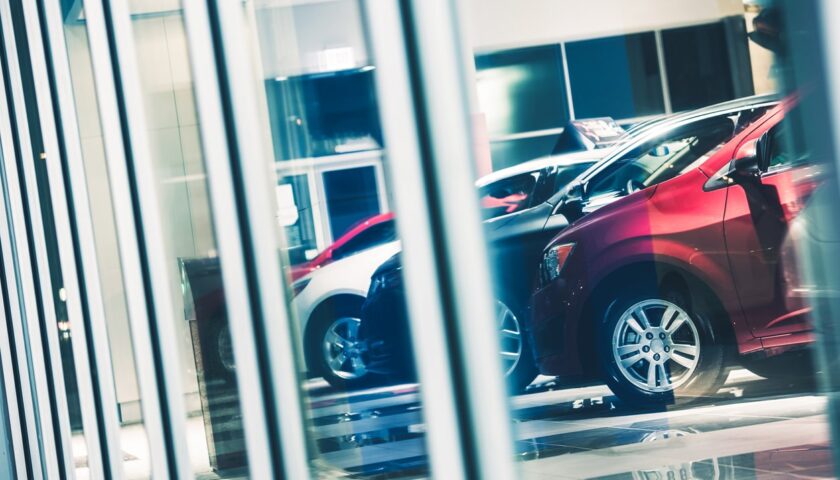No matter if your business is a limited company, PLC, partnership, or sole trader, there’s a finance lease for you.
A finance lease puts you in control
Most businesses need expensive assets to produce the goods and services they sell. These assets are typically cars, vans, plant and machinery. Without them, many businesses simply cannot function. However, buying big-ticket items can create problems with cashflow and for companies with seasonal finances, spending a large sum all at once may be impossible. But not to worry. Say hello to the finance lease – the low-cost way for businesses to secure the major tools they need.
Buy over time with a low deposit. Roll maintenance and repairs into the deal. Reclaim tax and VAT. Finance leasing is fast, flexible and affordable. Give your business what it requires without creating a financial crunch.
How does a finance lease work?
The term ‘finance lease’ has become a catchall phrase for asset financing that is not a dedicated purchase agreement (such as hire purchase). In fact, there are three main types of finance lease:
- Finance lease:
A finance lease allows your business to use an asset for a fixed period and for a fixed monthly rental cost. At the end of the agreement the business will have the option to purchase the asset for a pre-agreed sum. A finance lease allows businesses to spread the cost of the asset over time and with lower monthly payments than if they were to purchase the asset.
Similar to finance leasing, but the lessee (you), cannot purchase the asset at the of the contract. Additionally, the agreement will include a Residual Value that is based on the period of the lease and the estimated value of the asset at the end of the contract.
At the end of the agreement the asset is sold to a third party on behalf of the finance company. If the asset sells for more than the Residual Value, the finance company will refund a percentage of the surplus back to you. If the asset sells for less than the Residual Value, you will be liable to make a further payment to the finance company.
An operating lease allows businesses to use the asset for a lower monthly cost than finance leasing or buying an asset with hire purchase. Depending on the asset being leased, operating leases may come with included maintenance and repairs. In many cases, (except company cars), businesses may reclaim 100% of the VAT element of the monthly cost – including any maintenance charges.
- Contract hire:
The simplest form of lease. Contract hire is just a long-term rental. The business rents the asset for a fixed term – typically 2-3 years – and pays a fixed monthly sum for its use. Maintenance and repairs are usually included in the deal. At the end of the contract, the business hands the asset back to the lessor. There is no Residual Value to meet, and no option to buy the asset. In many cases, (except company cars), businesses may reclaim 100% of the VAT element of the monthly cost – including any maintenance charges.
Finance lease a car
Finance leasing for a company car works as above, with the agreement often including maintenance and repairs and a mileage cap. Lessees who exceed the mileage cap will pay extra for every mile they go over the limit. Depending on the type of finance lease, the lessee may have the option to buy the at the end of the contract period.
Company cars are taxed differently from most business assets. Even though the vehicle has been leased by a business (which may be a limited company, PLC, partnership, or sole trader), the organisation may only claim back some of the lease cost – which will depend on the ratio of business to personal use of the car. Additionally, in most cases, businesses may only be able to reclaim up to 50% of the VAT element of the monthly cost. This will reflect any personal use of the car.
Finance leases allow businesses to spread the cost of using the car over time and at a lower monthly cost than if they were to purchase the car with a hire purchase agreement. In most cases, the initial deposit is equal to one month’s lease payment.
Finance lease a van
Finance leasing for vans and other commercial vehicles is similar to leasing for company cars. The only major difference is the tax status of the lease. For vans and commercial vehicles, 100% of the lease cost may be set against tax and for VAT-registered businesses 100% of the VAT charged on the monthly lease fee may also be reclaimed.
An example of finance leasing
ABC Plumbers need a new van for their business. Instead of paying cash or opting for a hire-purchase agreement that comes with higher monthly payments, they choose to lease a new vehicle. The deal they select is an operating lease. It works like this:
- The van costs €20,000.
- The lessor (lender) offers to lease the van to ABC (the lessee) for €350 per month, including service costs, and for 48 months. The Residual Value is set at €4,000.
- ABC pays one month deposit of €350 and drive their new vehicle away. Over 4 years, they pay a total of €16,800 for use of the van.
- At the end of the contract, the vehicle is sold for €5,500 – €1,500 more than the agreed Residual Value. The lessor passes 95% of €1,500 back to ABC. They receive €1,425 which they use to lease a new vehicle and put the surplus cash back into their business.
Pros and cons of finance leasing

The Pros:
- Allows the business to obtain a newer asset than they may be able to secure if they were to buy it.
- Spreads the cost over time and at a fixed monthly price which will not go up even if bank interest rates rise.
- Allows a business to use an asset at a lower monthly cost than if they were to buy it with a hire purchase agreement.
- Low deposit – usually equal to the first month’s lease payment.
- Leasing costs on certain assets – such as business vans – are 100% tax deductible and allow the business to reclaim the VAT.
- Depending on the leased asset, the agreement may include maintenance and repairs.
- Depending on the type of lease, the lessee may have the option to buy the asset at the end of the contract period.

The Cons:
- Unless the lessee chooses a Finance Lease, the asset returns to the lessor (lender) at the end of the contract period.
- May include a large Residual Value that could see the lessee paying more at the end of the contract.
- May include usage limitations – such as a mileage cap – that could cause the lessee to pay more at the end of the contract.
- The lessor owns the asset. If the lessee defaults on payment, the asset returns to the lessor.
What are the five criteria for a finance lease?
The five criteria of a finance lease (not an operating lease or contract hire agreement) are:
- Lessee may own the asset at the end of the lease.
- The lease contains a ‘bargain purchase’ option – this means the lessee may buy the asset for less than the market value.
- The lease is active for a major part of the asset’s economic life.
- The total of the lease payments will represent most of the fair value of the asset when the lease was taken out.
- The asset is of such a specialised nature that it will have no further value to the lessor at the end of the contract period.
If your lease contains one or more of the above, you have chosen a finance lease.
What is the difference between a finance lease and an operating lease?
A finance lease gives the lessee the option of buying the asset at the end of the contract. With an operating lease, the asset always returns to the lessor (the lender). An operating lease will also include a Residual Value that determines the projected value of the asset when the contract ends. If the asset is worth less than the Residual Value when the contract ends, the lessee must pay an extra charge to make up the difference.
Finance lease vs hire purchase
A finance lease is a long-term rental agreement with an option to buy at the end of the contract. A hire purchase agreement lets the buyer purchase the asset over time, with the value of the asset repaid in equal instalments. The buyer always owns the asset when the contract ends. Finance lease monthly payments are usually lower than hire purchase because the lessee is only paying down some of the value of the asset.
Finance lease vs contract hire
A finance lease is a long-term rental agreement with an option to buy at the end of the contract. Contract hire is also a long-term rental agreement, but it will usually include maintenance and repairs, and the asset always returns to the lessor at the end of the contract period. There are no residual payments with contract hire.
Finance lease vs capital lease
Finance leases and capital leases are almost the same type of loan. However, a capital lease is recognised as a form of purchase for tax purposes and the leased asset must be recorded on the balance sheet as a taxable item. Capital leases may also offer more flexibility with regard to eventual ownership and with the format used to calculate the monthly cost.
Is a finance lease the same as lease purchase?
Yes. Both are long-term rental agreements with an option to buy at the end of the contract. However, lease purchase is more like Hire Purchase + Balloon in structure – with the lessee almost certain to buy the asset at the end of the term. With lease purchase, the lessee pays for the asset over time in equal instalments to own the asset at the end of the term but pays less each month than in a simple hire purchase agreement. At the end of the contract period, the buyer will need to make one larger payment to own the asset. This is called a ‘balloon’.
Is PCP a finance lease?
Yes. PCP (Personal Contract Purchase) and finance leasing both allow the lessee to pay for the use of the asset over time at a lower monthly payment than if they were buying the asset with hire purchase. At the end of the contract, PCP and finance leases give the lessee the option to buy the asset from the lessor. Note that PCP leases are more commonly used by private buyers, not businesses.
Finance lease accounting treatment
ASC 84 is an Irish accounting rule designed to report information that faithfully represents lease transactions and provides a basis for users of financial statements to assess the amount, timing and uncertainty of cash flows arising from leases. To meet that objective, a lessee should recognise assets and liabilities arising from a lease as follows:
- Record the present value of all lease payments as the cost of the lease.
- Record the interest portion of each payment as an expense.
- Depreciate the cost of the asset over its applicable write-down period.
- Recognise the disposal of the asset at its retirement.
Depending on the type of asset being leased (car, van, machinery, etc), the lessor may be able to claim up to 100% of the value of the lease payments as a tax deduction.
Finance lease tax treatment in Ireland
Depending on the type of asset being leased, Irish businesses may claim up to 100% of the value of the lease payments as a tax deduction. Some assets, such as a company car, are treated differently and the business must account for personal use of the asset if applicable. Personal use cannot be deducted for tax purposes.
VAT and financial leases
Depending on the type of asset being leased, VAT registered Irish businesses may reclaim up to 100% of the VAT element of the lease payments. Some assets, such as a company car, are treated differently and the business may only reclaim some of the VAT. (Up to 50% on company cars).
Capital allowances on a finance lease
Finance leases are often considered to be an alternative form of ‘purchase’ and for accounting purposes they are included as assets and denied capital allowances. Instead, the accounts depreciation of a finance lease is usually allowable as a tax-deductible expense.
What is a finance lease with a balloon?
A finance lease with a balloon is the same as Hire Purchase + Balloon or a Lease Purchase agreement. The lessee pays a lower monthly sum than they would with a simple Hire Purchase agreement, and they have the right to buy the asset at the end of the contract by paying a larger, final sum – known as the ‘balloon’.
Will I own the vehicle at the end of a finance lease?
It depends on the type of lease. You may opt to buy the vehicle at the end of the contract with a finance lease, but the vehicle will go back to the lessor with an operating lease or a contract hire agreement




































 yet? Register here!
yet? Register here!